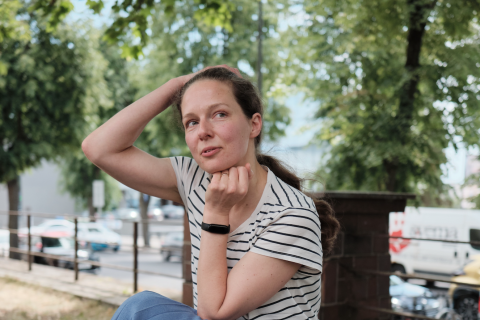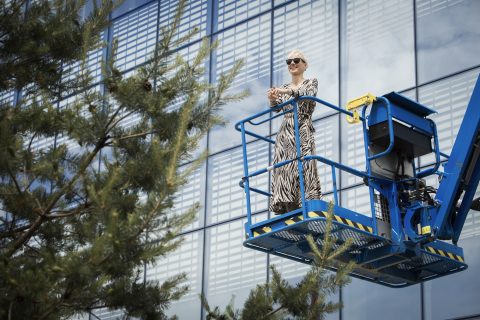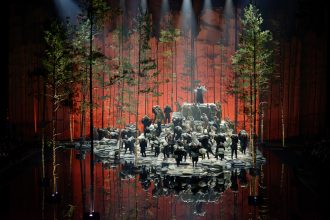During the international performing arts festival ConTempo on August 16 – 17, Girstutis cultural center will present the premiere of a dance performance titled Mikado. The show, which brought together an international team, explores human relationships and states as more and more of our daily activities move into virtual space. We talked about this changing interconnection and a relationship with the environment, the rendering of ephemeral virtuality through dance and the uniqueness of the performance with Mikado choreographers Vittoria de Ferrari Sapetto and Andrea Valfre as well as the founders of Šeiko Dance Theatre Agnija Šeiko and Goda Giedraitytė.
To physically convey the intangibility
Choreographers V. de Ferrari Sapetto and A. Valfre, who are creating the performance, said that the plot of the dramaturgy began to emerge even before the pandemic. Observing the world around them, they began to look for ways to physically express our changing society, communication patterns, which are undoubtedly affected by modern technology, and the covid reality has intensified the importance of the idea even more. This is how the main prop of the performance – the martial arts stick – appeared. The choreographers see the multifaceted range of meanings of this element, “We thought about what objects act as an extension of a person. Today we have telephones, but in ancient times people used sticks. People always had the tools that were vital for them, and although the phone and the stick are different in form, they perform parallel functions of making contact and getting to know the world,” V. de Ferrari Sapetto explained. “It also works as a contrast, because with a stick you can only make contact when you are physically here and now, and technology allows the action to be performed without a specific physical location. However, physical presence provides the contact with humanity and organicity,” A. Valfre added.


The title of the performance – Mikado – is a reference to a Japanese game in which a number of sticks are placed on a table and the player must remove them one by one without destroying the rest. “We use the sticks in the performance to create a network that has its own rules, functions, flow and which operates perfectly, but when you try to pull one part out, it starts to fall apart. Just as in the Mikado game, if you move one detail, either nothing happens, or everything falls apart. In the same way, when we wander with our thoughts in virtuality, we affect the world without noticing, either by barely touching it or causing drastic changes,” the choreographer said. In this way, the creators juxtapose the principles of archaic society and social networks, at the same time noting the visual parallels between the bodies connected by sticks and computers as well as battery lines.
Probably only in a few decades we will be able to see the consequences of our current everyday life.
“The sticks used in the play are like a human prototype – society as a bundle of sticks. A stick can attract and repel you, stroke and resist. Here we are talking about the changing relationships between people, about the conflict between virtuality and physical reality, the lack of critical thinking, the creation of a new space in social networks”, G. Giedraitytė, the producer of Šeiko Dance Theatre, explained the idea of the performance. Mikado team agrees that the performance doesn’t offer specific answers but raises questions about the environment surrounding us and its changes. “We live in a time when it is especially difficult to predict what will happen next. Probably only in a few decades we will be able to see the consequences of our current everyday life. I think it is our responsibility as artists to reflect on this,” V. de Ferrari Sapetto explained.
Contact and distance
The sticks Mikado uses come from the kinomichi martial art, which the show’s choreographers have been practicing for years. As V. de Ferrari Sapetto observes, in martial arts each step has a specific function – to defend or to attack, while in dance there is no such specificity. The sense of movement remains, but there is no set goal, so the possibilities of the plastic become endless. “Kinomichi is a unique martial art. Here, the aim is not to defeat the opponent as quickly as possible. The plastic of sports here is much softer and can be organically used for dance, helping to highlight the importance of contact in choreography,” A. Valfre spoke about the synthesis of martial arts and modern dance in the performance.
This interdisciplinary approach allows the dance troupe to discover new ways of moving together and emphasizes the conceptual basis of the performance. Choreographers emphasize the organicity of dance plastic. The scenes are created together, often emerging through improvisations, however, the mastering a new tool and feeling each other perfectly is quite a challenge. “There will be some solo performances within the performance but most of the choreography focuses on the group and requires the dancers to be aware of not only their own body, but also that of another person. It also represents the model of society, because as an individual you live with many people around you and you have to follow certain rules,” V. de Ferrari Sapetto shared her thoughts. Drawing a parallel between choreography and modern technologies, A. Valfre expanded on the idea, “We noticed that dancers feel free when they are connected with sticks, similarly social media gives us a feeling of freedom. You’re in a network that has its own frame, but you feel free to move around it as you please, keeping in touch with the tool at hand.”
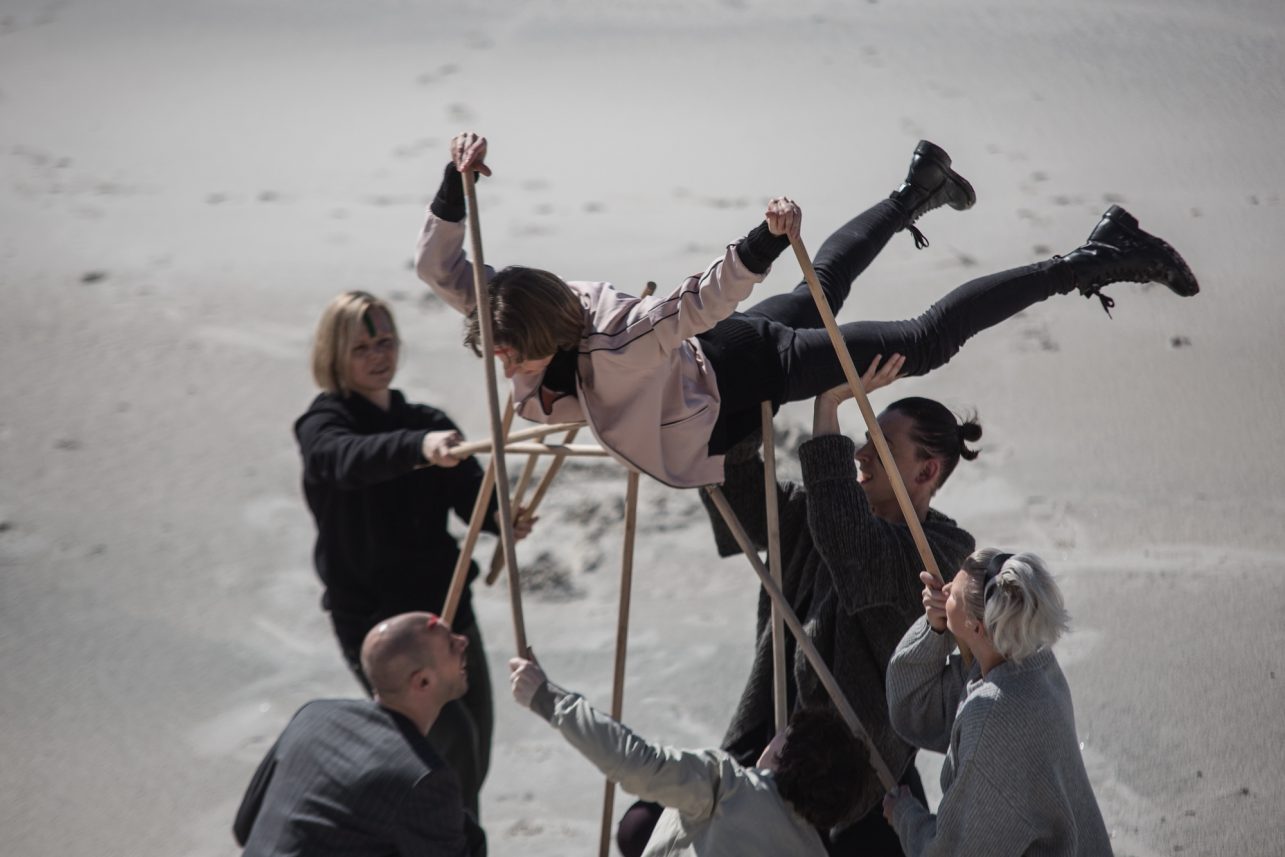
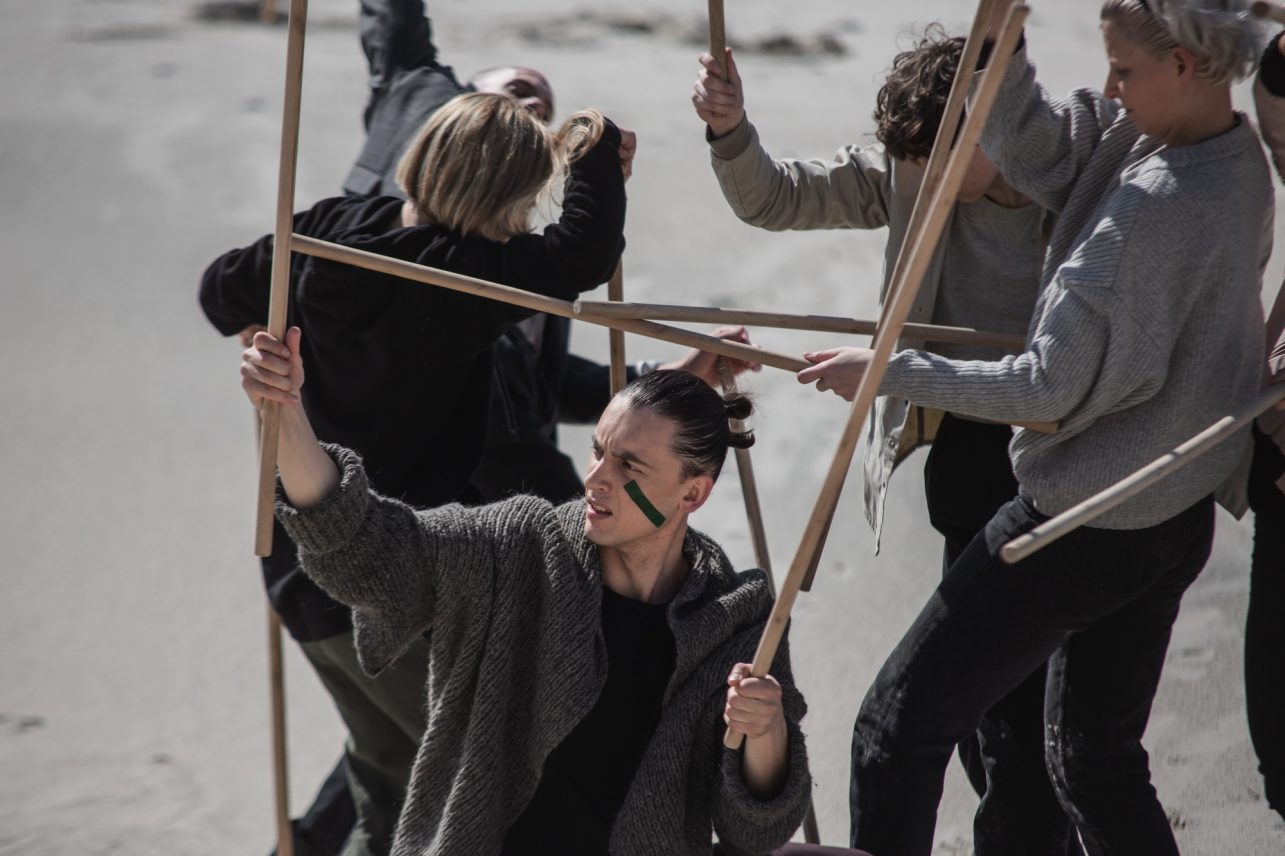
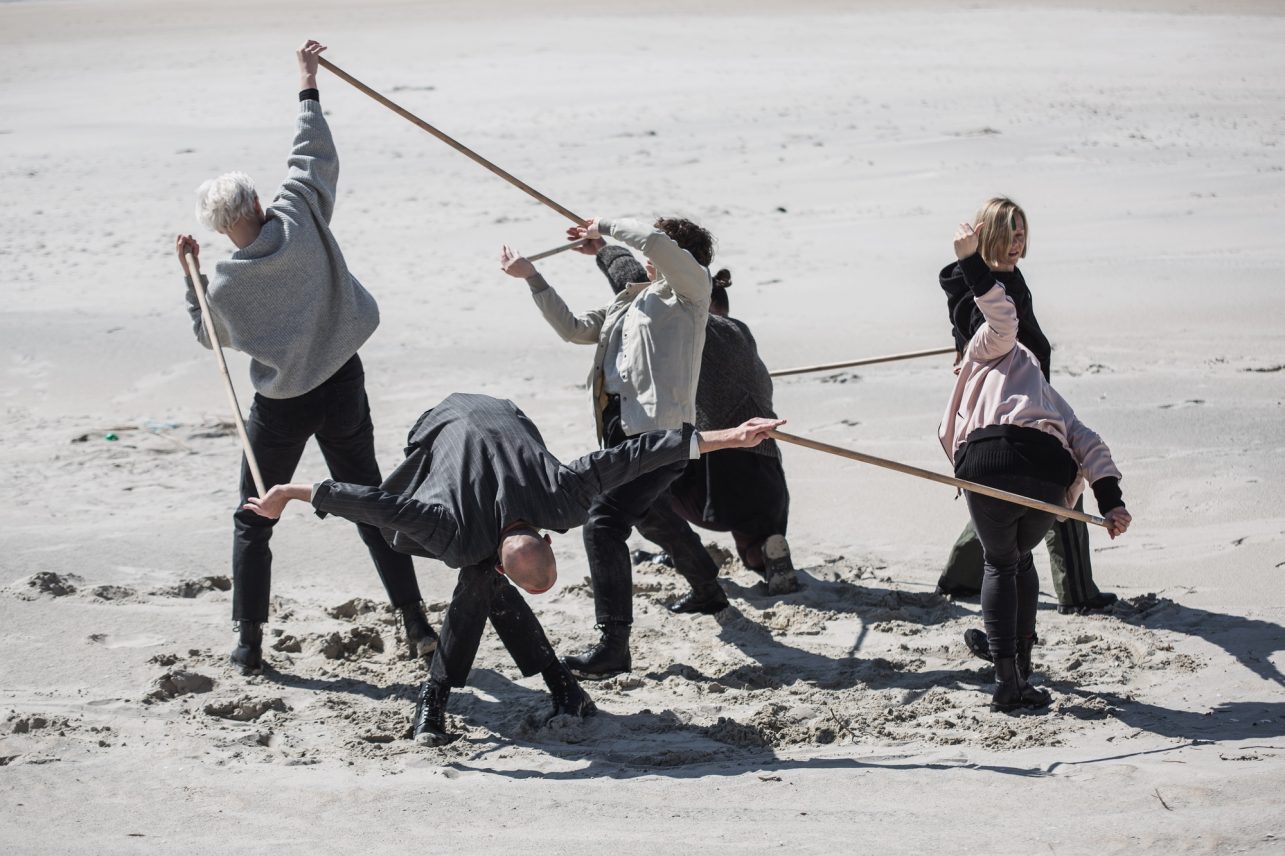
Contact and distance in the performance become key elements not only in creating choreography, but also in reflecting today’s society. Interestingly, the length of the kinomichi stick – about one and a half meters – reminds us of the safe distance that had to be maintained between people at the height of the pandemic, looking for ways to foster human connection in virtual space. In this way, Mikado reflects the tangible physical distance between bodies and simultaneously indicates the ephemeral space that separates us in the virtual world. “The stick visually embodies the moment when we cannot get close to each other by communicating in non-physical space. Virtuality in the performance unfolds through poetic images, distance and closeness between bodies,” A. Šeiko, founder and director of the Šeiko Dance Theater, explained.
Different experiences
Another unique feature of Mikado is a large and colorful team of creators. The show will be performed on stage by the Šeiko Dance Theatre, Nuepiko dance troupe, seven dancers from various European countries, selected during an open audition, and the communities of Kaunas city and district. “From the very beginning, we had the goal of bringing together an international troupe for the performance because, in our opinion, this corresponds to the idea of the European Capital of Culture to unite different artists for one creative act. We want the performance to represent various cultural and dance experiences, styles and expressions,” G. Giedraitytė explained.
Exchanging experiences, getting to know different cultures and making new contacts is a hugely valuable thing. “In order to improve, new experiences are necessary. During the first stage of our creative work, we noticed that the dancers felt uplifted and inspired by this process and the opportunity to work with new ideas brought by each member of the troupe,” A. Šeiko said. The sharing of experiences in the case of Mikado is not limited only to professional dancers, amateurs also participate in the performance. The creative team agrees that it’s a mutually beneficial experience, helping the community to become more aware of their bodies and inspiring dance professionals.

World-class lighting designer Giacomo Gorini and composer Giorgio Ferrero are also working with Mikado. They have been collaborating with the choreographers for many years. Their contribution makes it possible to further emphasize the key elements of the performance and create new meaningful and experiential layers. The troupe is supplemented by a circus artist and a martial arts specialist who joined during the auditions. “It is not very often that we get to work on international projects of this scale, with fifteen professional dancers and a team of top-level professionals from abroad. In a dance world this is like a feature film. I think this is especially relevant in developing the skills, experience and professionalism of dancers and choreographers,” A. Šeiko shared her thoughts.
To discover your narrative
The viewer is invited to come to the dance performance without preconceptions and without the expectation of finding a coherent narrative or map. “Contemporary dance is no longer news in Lithuania, and we trust our audience. We believe that they will read the key symbols and ideas of the performance. Even if they will interpret the dance in their own way. Perhaps through their experiences they will discover different meanings than the creators; other layers will open up, which is interesting and meaningful”, G. Giedraitytė said. The choreographers promise that Mikado will invite the audience on a journey of ideas. The viewer will find scenes that will make them laugh and cry but what the team of creators mostly hopes is that the performance will remain in people’s memories, in one form or another.
We try to open the door to new ideas, but we don’t offer one answer or one way of thinking.
“As creators, we want to encourage people to ask questions about what’s going on in the world and encourage them to find the answers themselves. It is important to discover different ways of reading reality, because what we see is not necessarily the only truth. We aim to provide opportunities to look at everything from different angles. I think this is extremely important, because nowadays people don’t find time to stop and reflect,” V. de Ferrari Sapetto shared her thoughts. The choreographers mentioned that it is extremely interesting for them to observe people’s reactions. It works as a kind of social and psychological research. And yet, they both shake their heads sternly when asked if the play has one specific message. A. Valfre’s thought beautifully summarized how the relationship with a viewer is perceived, “We invite people to ask themselves what their relationship with another person, society and the world is. We try to open the door to new ideas, but we don’t offer one answer or one way of thinking.”

